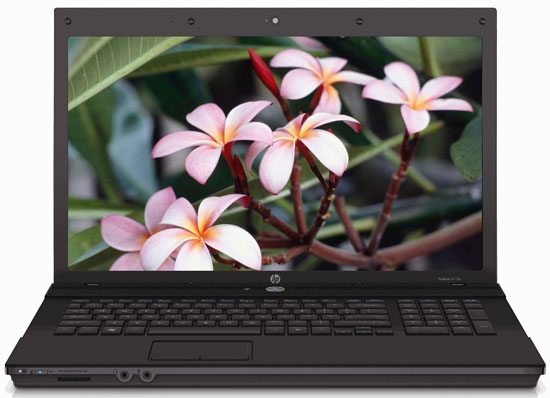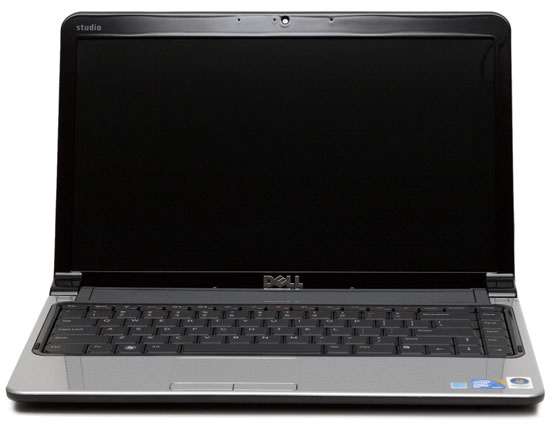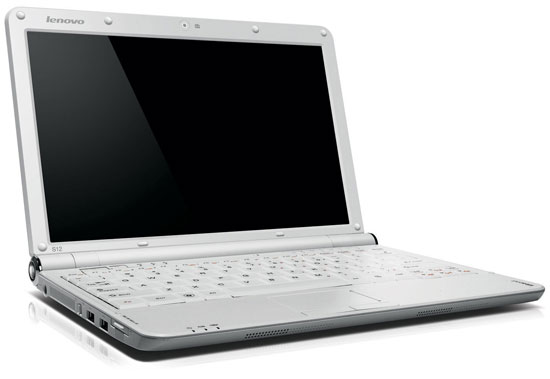Mobile Buyers' Guide, December 2009
by Jarred Walton on December 6, 2009 12:00 AM EST- Posted in
- Guides
AMD Laptops
Outside of sales - and there are many sales going on right now - laptops with AMD processors will mostly fall into this price bracket. The performance offered is good, though certainly there are faster laptops. One of the big selling points for AMD laptops is that they have good integrated graphics (ATI HD 3200) that can run many games, though usually only at low resolutions and detail settings. AMD-based laptops are really a question of priorities, and if you value performance and cost over battery life they are a very compelling option.
The latest AMD CPUs are now being built on a 45nm process and have architectures based off of K10 instead of the aging K8 design. All of these CPUs bear the Roman numeral "II" in their name, so look for the Turion II M500, Turion II Ultra M600, and Athlon II M300 CPUs. These CPUs should improve battery life and performance relative to older mobile Athlon/Turion designs, though it's unlikely they will be able to match Core 2 CPUs. Unfortunately, we're still trying to get a laptop for testing, so we can't provide a definitive answer at this time. We tried to find more information, but the best we could do is a note of "5 hours 15 minutes" with an HP dv7 at BestBuy - that's a 17.3" notebook with an 8-cell battery.
Ultimately, AMD-based laptops will typically cost around $100 less than Intel-based laptops with similar features, but they generally offer less battery life and performance. Given the features and performance available in the ASUS UL80Vt, we would recommend staying closer to the lower end of the price spectrum if you're looking at AMD laptops. The overclocked SU7300 CPU should offer close to the same performance as a ~2.0GHz AMD "II" CPU (i.e. the Athlon II M300/M320, slightly slower than the Turion II M500), and the G210M should offer about the same level of performance as the HD 3650/4570. You'd want a laptop with an HD 4650 or a GeForce G120M/G220M (9600M GT) and a Turion II Ultra (Pentium T4300) to surpass the UL80Vt performance, but there's still the topic of battery life.

The HP dv6z and dv7 are two of the few laptops that currently offer the latest AMD 45nm processors. With prices starting at $550 with the current $150 rebate - $630 with 4GB and a high capacity 6-cell battery - it's an interesting laptop but not our top recommendation. Depending on how much weight you place on battery life, graphics performance, and laptop size, you may disagree. In that case, have a look at the HP Pavilion dv6z (we're not sold on 17" laptops, so we'll pass on the dv7).
Intel Laptops
On the CPU side, Intel has had a clear lead over AMD since the launch of Core 2 several years back. In fact, on mobile solutions it would be difficult to suggest that AMD has ever enjoyed a lead over Intel. Ever since Banias in 2002, Pentium M and Centrino delivered what was arguably a better mobile solution for most users than anything AMD offered; Athlon 64 laptops in the Pentium 4 era were mostly of interest to the high performance crowd.
The CULV processors are great for battery life, but even the ASUS UL80Vt with its overclocked CPU doesn't offer nearly the performance available in other Core 2 mobile offerings. The Pentium T4300 (2.10GHz, 1MB cache) is very inexpensive and it should match most mobile AMD CPUs. Laptops start at around $500, but the GMA 4500MHD IGP is clearly inferior to ATI's HD 3200/4200. The P8400 and P8600 take clock speeds up to 2.26GHz and 2.40GHz, though you'll be hard-pressed to keep costs under $850 with such CPUs. If you want better gaming performance, look for a lower end Core 2 CPU with a discrete GPU or a better IGP like NVIDIA's 9400M.

Our favorite pick right now for Intel Core 2 laptops in this price bracket is the Dell Studio 14z. Maximum battery life is around six hours with the 8-cell battery, and the combination of Core 2 with the 9400M results in a good blend of performance. In gaming tests, the GeForce 9400M is around 50% faster than the ATI HD 3200, making it the current king of IGP solutions as far as performance is concerned. The base model Studio 14z comes with a Core 2 T6600 (2.2GHz, 2MB, 800FSB), 3GB DDR3, 250GB HDD, 1366x768 LCD, 56Wh battery, and Win7 Home Premium. $800 will get you the larger battery, and $850 will allow you to upgrade to the 1440x900 LCD - both upgrades are highly recommended.
Atom Laptops?
While there are plenty of Atom-based offerings in this price range, we feel Atom is a much better fit at the lower end of the price spectrum, and we would recommend against spending more than $400 (perhaps $450) for such a laptop. Regular Core 2 laptops are more than three times as fast (even for the low end CPUs), and CULV laptops are still twice as fast while offering similar battery life. Atom is really about keeping costs as low as possible at the expense of performance, and we can't recommend such laptops in the high price segments. As mentioned already, we also place the VIA Nano laptop (Samsung NC20) in this same category; priced at over $500, there are just too many other compelling options.

If you want a viable Atom netbook for around $500, we'd recommend the Lenovo S12 with 2GB. It's around $520, but we didn't like the HP Mini touchpad or keyboard enough that we'd spend the extra on the IdeaPad S12. About the only thing it can do without difficulty that CULV systems struggle with is 1080p Flash video, but that's at least something.










49 Comments
View All Comments
Hrel - Monday, December 7, 2009 - link
I've said it before on here I'd be glad to buy the ASUS UL80Vt if it only had a screen with a resolution of at least 1600x900 (decent quality screen required. like 1000:1 contrast ratio) The Intel SU9600 CPU instead with the same percentage overclock and the Nvidia GT240 GPU. Finally I'd like that laptop to cost less than 1000 dollars and get at least 7 hours internet battery life. If removing the integrated GPU and having only the dedicated GPU is required to keep the price down I'd be totally fine with that.Or better yet, sell it with the integrated GPU, leave the slot and heatsink for the dedicated GPU and offer the dedicated GPU as an add on or after-market purchase on newegg.
geok1ng - Sunday, December 6, 2009 - link
I really don't get the idea behind the suggestion of the ASUS UL80Vt on the sub $850 range, when you can get the Dell Studio 14z: you get a better CPU, a better IGP ( and having Nvidia 210M as add on VGA isn't really a great improvement over the 9400M G)and a better battery for the same price range.The problem is that outside Mac Books you simply dont get state of art notebook hardware: a C2D 45nm CPU, a 9400M G IGP and a small form factor. And a Non-TN LCDs is a dream.
LongTimePCUser - Monday, December 7, 2009 - link
For many people the ul80vt is a much better solution than the Dell 14z.The Dell 14z has a 5 hour battery life. The ul80vt has a 12 hour battery life.
The Dell 14z doesn't have a DVD player. The ul80vt has one.
JarredWalton - Sunday, December 6, 2009 - link
G210M is roughly twice the performance of 9400M G, and where 9400M still has games where it struggles, G210M can run everything, albeit at low details in some instances (i.e. Crysis @ LQ 1366x768 and 42.05FPS -- compare to 14z with 25FPS for the same setting, with a CPU that's running 38% faster). If you can get both the benefits of G210M performance with better battery life than 9400M, isn't that desirable?As for non-TN panels, I believe you're mistaken. Everything out right now is TN on laptops. MacBooks used some IPS in the past, but that was several years ago. They have matte LCDs on the 15" and 17" MBP, but that's about it.
Paulman - Sunday, December 6, 2009 - link
I was very surprised to see no mention of the AMD Athlon Neo based netbooks, such as the MSI Wind U210 or the HP dv2 series. My brother got an MSI Wind U210 with the Athlon Neo processor several months ago, and it ran Windows Vista on 1GB of RAM decently and I think the prices was just under $400 CDN online at Future Shop here in Canada. This was a 12.1" netbook (1366x768 with a bright LED backlight) at ~1.5 kg in weight with a 6-cell battery. I recently upgraded it to Windows 7 and it's running nicely.I quite like it, so I was disappointed to see that Athlon Neo-class products weren't even mentioned in this roundup.
JarredWalton - Sunday, December 6, 2009 - link
My experience with Neo is limited, but battery life didn't appear to be in the same ballpark as Atom and CULV products. Neo is faster than Atom, but CULV is clearly faster (dual-core CULV at 1.2GHz easily beats single-core MV-40).I guess it depends on what you're after. The MSI Wind U210 should get 3-5 hours of battery life at 100 nits. The HP dv2 with 4-cell battery looks like you'll get about two hours of Internet surfing, or 3 hours with the 6-cell upgrade. So if you're after battery life, Neo isn't an answer to Atom or CULV. However....
When Neo is paired with a decent GPU, you can get much better than Atom performance, but the price of the HP dv2 is too high (nearly as much as the ASUS UL80Vt and UL30Vt). The Wind U210 uses X1270 IGP, which is only slightly better than GMA 4500MHD in terms of performance. Still, the Wind U210 would be a better choice for Neo than the HP dv2... pairing a (relatively) low power CPU like Neo with a discrete GPU doesn't make much sense, unless you can turn the dGPU off and run on an IGP when you want (a la UL80Vt).
rwrentf - Friday, December 11, 2009 - link
I posted a comment about the HP DM3 asking you how that would compare, and for some reason my comment is gone. The DM3 has a dual core neo (L335), 4GB ram, 7200 rpm hard drive and ATI HD3200 graphics. You say in your comment that the CULV is clearly faster, but I haven't seen any tests that back that up online. And Why would you compare the dual core CULV directly to a single core MV-40 when you can compare it to a dual core L335?JarredWalton - Friday, December 11, 2009 - link
I'd expect a 1.3GHz CULV (i.e. Pentium SU4100) to be roughly on par with the performance of the L335 (1.6GHz), and I would expect the L335 to use more power (18W TDP, but in my experience AMD chips run much closer to TDP than Intel chips). However, HD 3200 is still 2~3 times faster than GMA 4500MHD (though still too slow for gaming IMO).I suppose the question is what sort of battery life you can get out of such a laptop compared to CULV options of a similar price. I found a comment from an HP representative (off Wal-mart) stating around 3 hours from the DM3, which is about half of what a typical $600 CULV will get, but elsewhere you see "up to 6 hours". If it can truly get 6 hours, it's definitely worth a look.
Incidentally, if I were to go with a DM3, I'd grab the Turion X2 L625 -- better power characteristics than the Athlon X2 L335.
zefyr - Sunday, December 6, 2009 - link
I commend you you on a thorough article. You've covered many of the laptops I've been looking at, and indeed have raised the same question "Any Good LCDs?" But, whats the answer? Especially if you plan on buying online. Can one find a high contrast LCD w good blacks like the Sony VAIO you mentioned and also get a gaming level NVIDIA GPU? Can it be done online w/o actually seeing it in person? I've almost bought both an ASUS g51vx and g71 for $800 or $900 respectively, until I realized the only thing they lack is a good LCD. Anyone, please post any suggestions.kawatwo - Sunday, December 6, 2009 - link
I have the G71x from Best Buy and the viewing angle is not great but for just you sitting directly in front of the laptop it is not an issue. The bang for the buck is still amazing. Don't know how long it will take for someone to come out with a 280m for ~ 1500, maybe never. I'm happy with the 260m though.